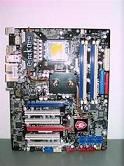AMD vil spare på strømmen.
Diverse d. 12. februar. 2007, skrevet af Huddy 7 Kommentarer. Vist: 614 gange.
#1
I like :e :o
Den cpu er klart min efterløser til den aldrende winchester.
Den cpu er klart min efterløser til den aldrende winchester.
#3
Hmm, en del as OS'et ?:(
Min AMD 4800+ X2 sammen med mit ASUS A8N32-SLI DeLuxe, der virker Cool'n'quiet ikke, selvom (i.flg. email modtaget fra AMDs kundesupport) Vista har det "indbygget". Måske ASUS ikke har betalt "licens" til Microsoft? ;)
Min AMD 4800+ X2 sammen med mit ASUS A8N32-SLI DeLuxe, der virker Cool'n'quiet ikke, selvom (i.flg. email modtaget fra AMDs kundesupport) Vista har det "indbygget". Måske ASUS ikke har betalt "licens" til Microsoft? ;)
#4
burgurne..
Du skal gå på skrivebordet->højreklikke->egenskaber-> pauseskærm->strømstyring, og så vælge minimal strømstyring og så anvend.
Samtidig med du har det enablet i bios og installeret c&Q self :)
Mvh
Du skal gå på skrivebordet->højreklikke->egenskaber-> pauseskærm->strømstyring, og så vælge minimal strømstyring og så anvend.
Samtidig med du har det enablet i bios og installeret c&Q self :)
Mvh
#5
Skal da snart have liv i min gamle maskine igen, nforce2 kunne spare på strømmen, man kan simpelthen slukke for cpu når den idler, gav idle temps på 1-2 grader over lufttemp, når man bare sad og skrev og hørte musik. (dog med Zalman 7000 køler)
Sært nok at det aldrig kom med i nogen af nvidia's drivere, virker ellers perfekt.
Sært nok at det aldrig kom med i nogen af nvidia's drivere, virker ellers perfekt.
#6
Glæder mig.. mon ikke den næste lille nye også bliver en AMD :)
#7
Jeg vil også ha' en, når de kommer🙂
Men! Husk hvis i vil spare strøm på socket am2, så er det ikke nforce i skal kikke efter, så er det via eller ati chipset og der er MEGET stor foreskel i strømforbruget. I dag er det mere bundkort, grafikkort og dårlige strømforsyninger der bruger strømmen🙂
Men! Husk hvis i vil spare strøm på socket am2, så er det ikke nforce i skal kikke efter, så er det via eller ati chipset og der er MEGET stor foreskel i strømforbruget. I dag er det mere bundkort, grafikkort og dårlige strømforsyninger der bruger strømmen🙂







